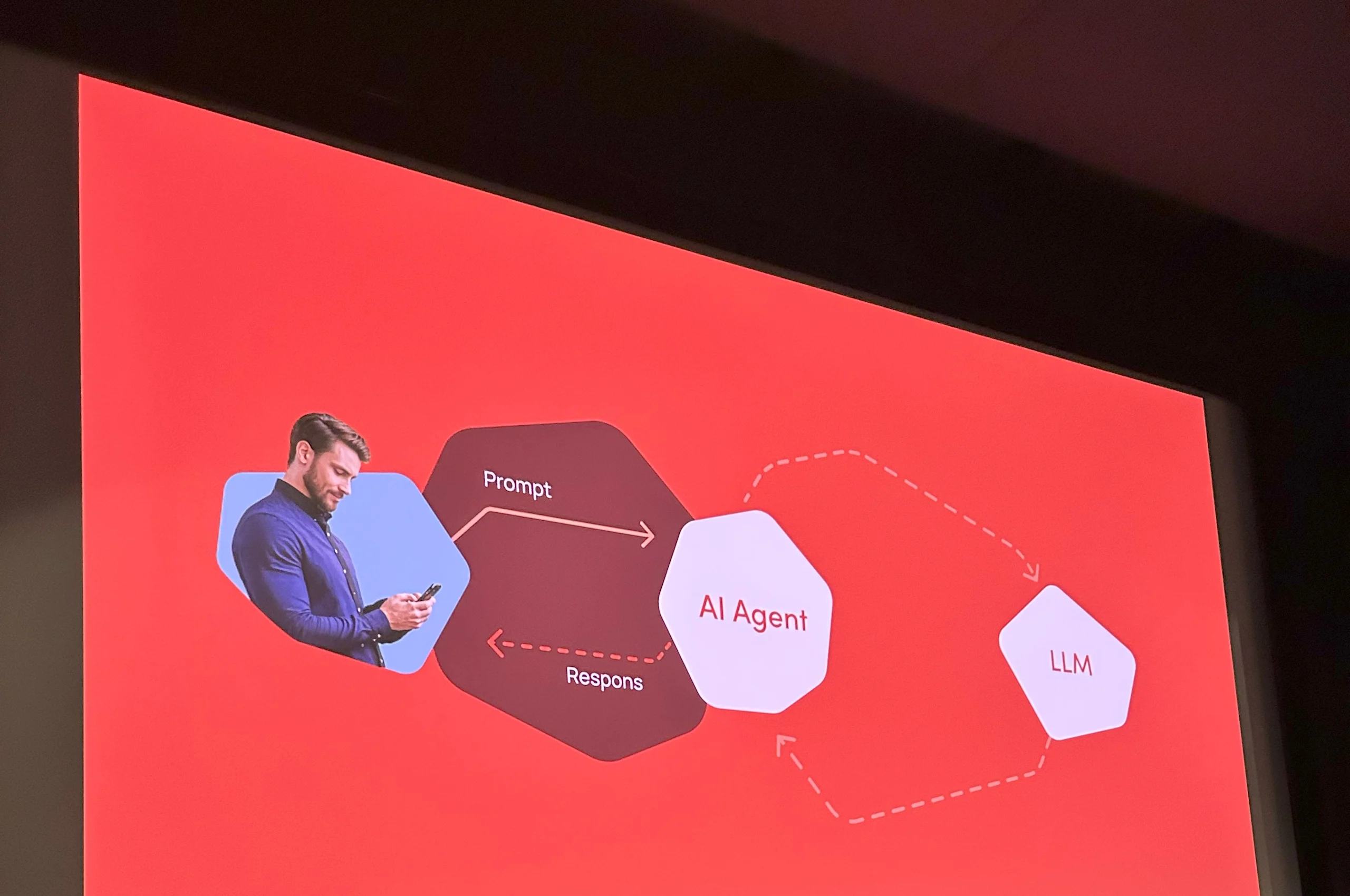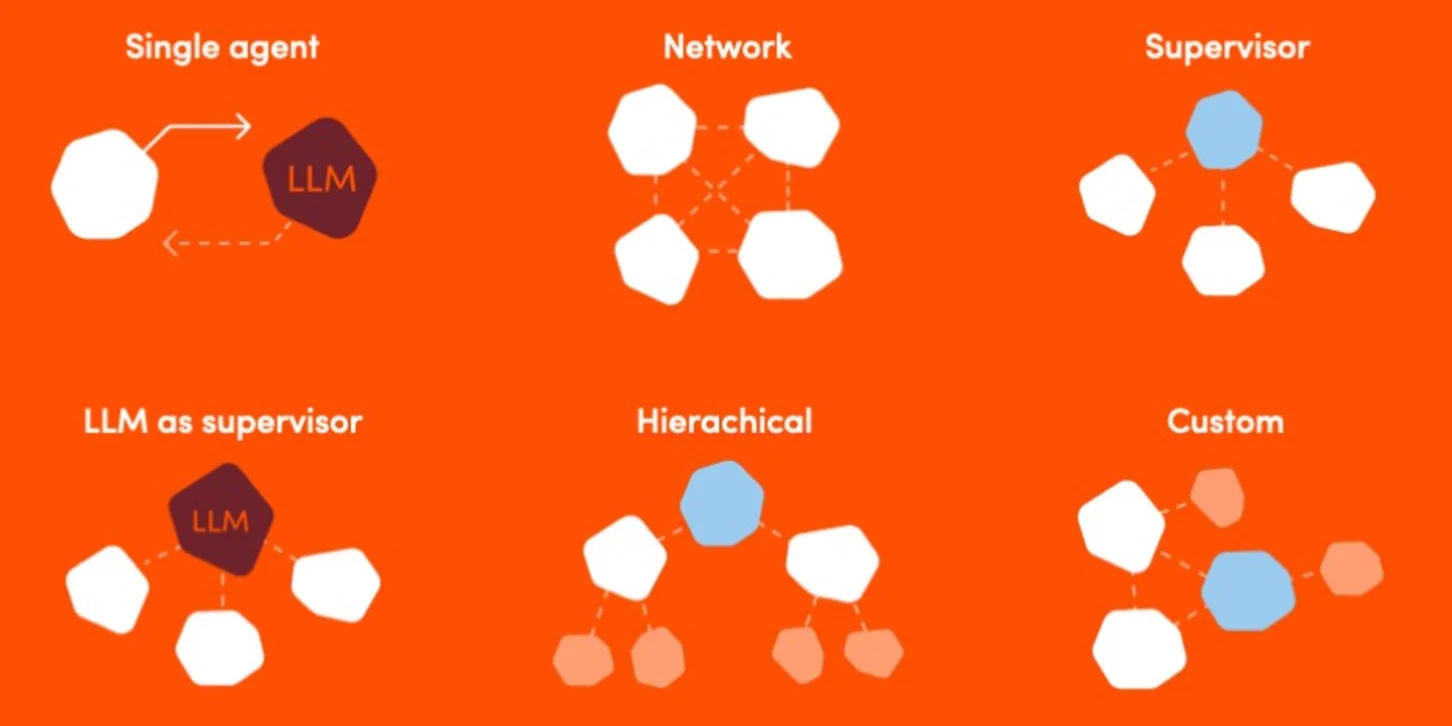

Karsten Marijnissen
Field CTO
4 min read
12 June 2025
How does an Agentic AI Platform work in B2B?
AI agents are intelligent and fast, but without structure they descend into chaos. During Emerce, I demonstrated how to make AI agents work together as a team. In this blog, you will discover why hierarchy and domain knowledge are essential and how you can start building a scalable AI approach today.
For the first time in twenty years, search volume on Google is declining. The reason? Users are increasingly turning to tools like ChatGPT. While consumers are embracing these tools, companies are still struggling with policy, strategy, and above all: execution.
During my keynote, I asked who in the audience was already working with AI. Most hands went up. But when asked who was using Agentic AI, almost no one responded.
What is Agentic AI?
In short: an AI agent that doesn’t just respond but takes action. Based on a prompt, the agent carries out a complete chain of steps:
- Issues instructions to other agents
- Consults internal knowledge and systems
- Updates and checks the memory of the LLM
- Interprets results and executes tasks
- Evaluates outcomes through the LLM
- Reports the result back to the user
It sounds straightforward, but the reality is complex. A single agent often works with multi-page prompts. Once multiple agents operate in parallel, things can quickly spiral into confusion. Who does what? Who has access to what? Who evaluates? Without structure, it becomes unmanageable.
Why hierarchy between Agents is essential
Human organizations rely on hierarchy, task division, coordination and review. The same applies to AI agents. If every agent operates with full autonomy, the result is confusion or even gridlock. But when one agent takes the role of orchestrator, task division, feedback and evaluation become manageable.
There are already clear models in use — agents that operate above others, or agents grouped by specialization. For example, a manager agent can direct a product information agent or sales agent. This kind of architecture should be deliberately designed to fit your organization, your processes and your governance requirements.
Er bestaan al duidelijke structuren: agents die boven andere agents staan, of agents die in specialisaties worden verdeeld. Denk aan een ‘manager-agent’ die klantvragen doorspeelt naar een ‘productinformatie-agent’ of een ‘salesagent’. Deze architectuur moet je bewust ontwerpen, passend bij jouw organisatie, processen en governance.

Minecraft as a mirror for your AI organization
During his talk, Karsten gave a compelling example: a research project in which thousands of AI agents were deployed in Minecraft. They received no instructions, only a goal: to survive and collaborate. Within hours, entire societies emerged, complete with economies, trade systems and even democracies.
What does this tell us? That AI agents can rapidly build complex social structures, provided they are given both space and direction. The parallel to your organization is obvious: without structure, chaos follows. But with clear rules, roles and collaboration, you can build faster than you thought possible.
Domain knowledge is more important than data
An AI agent without context is like a new employee without onboarding. You can feed it data, but without domain knowledge it won’t understand your business. That’s when things go wrong: hallucinations, bad recommendations or simply irrelevant answers.
Domain knowledge often lives in documents, but even more often in people’s heads. Structuring that knowledge is essential. A well-built internal knowledge base is the foundation of any successful Agentic AI approach.
Use case
A concrete example: Van Ommen produces high-precision tools like milling and drill bits. Product knowledge is complex, and salespeople need to deeply understand the materials. Much of that knowledge exists only in their heads. When someone leaves the company, the risk is significant.
By centralizing that domain knowledge in a structured knowledge base and linking it to AI agents, sales capacity becomes scalable. The agent doesn’t just understand the product, but also pricing, agreements, customer preferences and regional regulations. It speaks all languages, works 24/7 and learns fast.
According to Van Ommen, this brings not just efficiency but also strategic advantage:
“Agentic AI allows us to bypass the limitations of people and dealers. It enables us to scale internationally with a unique D2C strategy.”
Four action points to start today
My keynote ended with four concrete recommendations:
- Explore Agentic AI. Start learning, reading, experimenting.
- Structure your domain knowledge. Extract it from documents and people. Build a knowledge base.
- Make your tech stack AI-ready. Use systems with open APIs, proper integration and secure architecture.
- Start with one relevant use case. Begin small, for example by automating repetitive tasks. Focus on tangible business value.
Agentic AI is not a gimmick, nor a futuristic fantasy. It is an organizational model where AI agents collaborate to make processes smarter, faster and more scalable. Those who start today by structuring knowledge and testing, lay the foundation for an organization truly ready for the AI-driven economy.

4 min read
Beyond the Code: Why Culture is the "Secret Ingredient" of Strategic Nearshoring

4 min read
BOAT is not a Swiss army knife, and that’s a good thing

3 min read
Why AI pilots often fail (and how you can prevent it)

6 min read
Your colleague doesn’t know the answer. But your AI search engine does.
